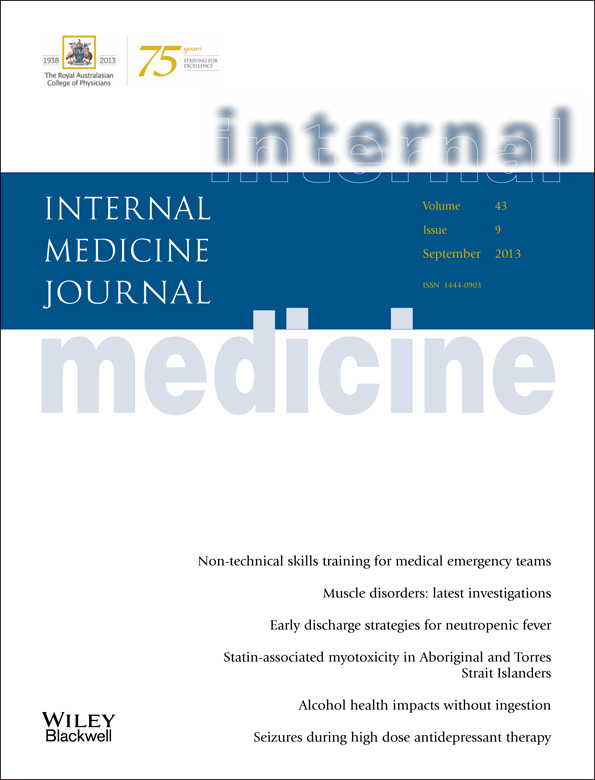Serious statin-associated myotoxicity and rhabdomyolysis in Aboriginal and Torres Strait Islanders: a case series
Abstract
Background
Statins are associated with skeletal muscle adverse effects. These are generally considered mild and reversible, with more severe toxicity occurring rarely. There is little known regarding statin myotoxicity in Aboriginal and Torres Strait Islander Australians who are at high cardiovascular risk and likely to receive statins.
Aims
To describe features of serious statin-associated myotoxicity (SSAM) occurring in Indigenous Australians and increase awareness of this condition.
Methods
Observational case series of SSAM in Aboriginal or Torres Strait Islanders. Cases were identified from personal clinical experience, referrals, reports to the Therapeutic Goods Administration, medical literature, an Internet search and reports from a histopathology laboratory. Information was collected onto a standardised data collection form.
Results
Fifteen cases of serious myotoxicity in Aboriginal or Torres Strait Islanders exposed to statins were identified from 2006 to 2012. The mean age was 55 (range 35–69). Painless weakness was the most common presentation. Interacting drugs were involved in seven cases. Biopsies were done in eight cases, three showed inflammatory polymyositis and five necrotising myositis. Three patients died and two had permanent severe disability. Resolution of symptoms after statin cessation was variable.
Conclusions
SSAM has occurred in the Indigenous Australian population with some fatalities. Awareness of the potential for SSAM is essential for early recognition and effective management to reduce probability of avoidable catastrophic harm. Safe, as well as effective use of medication, is essential for optimum health outcomes. Effective pharmacovigilance and therapeutic risk management are important for Aboriginal and Torres Strait Islander Australians.




